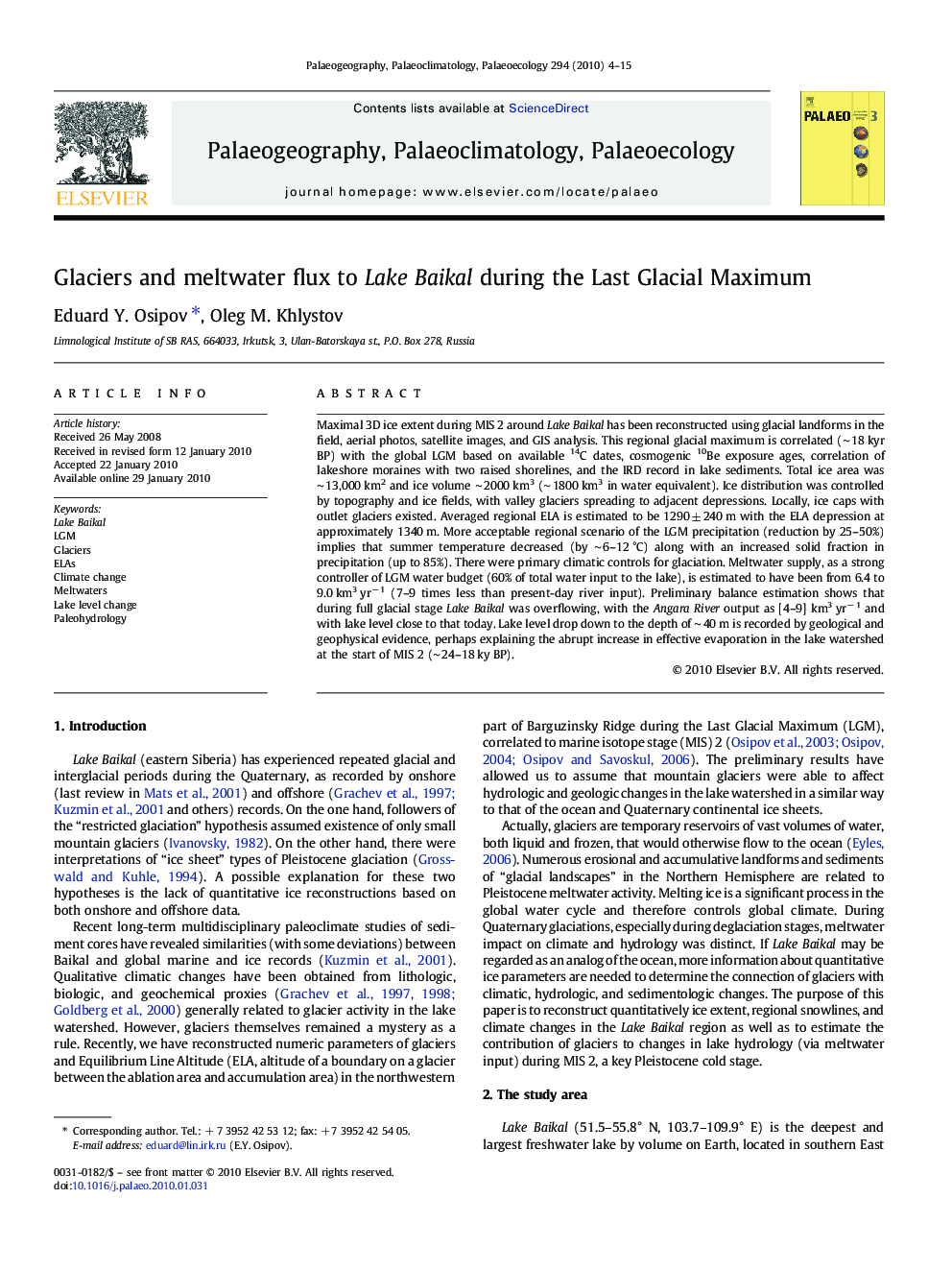| Article ID | Journal | Published Year | Pages | File Type |
|---|---|---|---|---|
| 4467691 | Palaeogeography, Palaeoclimatology, Palaeoecology | 2010 | 12 Pages |
Maximal 3D ice extent during MIS 2 around Lake Baikal has been reconstructed using glacial landforms in the field, aerial photos, satellite images, and GIS analysis. This regional glacial maximum is correlated (∼ 18 kyr BP) with the global LGM based on available 14C dates, cosmogenic 10Be exposure ages, correlation of lakeshore moraines with two raised shorelines, and the IRD record in lake sediments. Total ice area was ∼ 13,000 km2 and ice volume ∼ 2000 km3 (∼ 1800 km3 in water equivalent). Ice distribution was controlled by topography and ice fields, with valley glaciers spreading to adjacent depressions. Locally, ice caps with outlet glaciers existed. Averaged regional ELA is estimated to be 1290 ± 240 m with the ELA depression at approximately 1340 m. More acceptable regional scenario of the LGM precipitation (reduction by 25–50%) implies that summer temperature decreased (by ∼ 6–12 °C) along with an increased solid fraction in precipitation (up to 85%). There were primary climatic controls for glaciation. Meltwater supply, as a strong controller of LGM water budget (60% of total water input to the lake), is estimated to have been from 6.4 to 9.0 km3 yr− 1 (7–9 times less than present-day river input). Preliminary balance estimation shows that during full glacial stage Lake Baikal was overflowing, with the Angara River output as [4–9] km3 yr− 1 and with lake level close to that today. Lake level drop down to the depth of ∼ 40 m is recorded by geological and geophysical evidence, perhaps explaining the abrupt increase in effective evaporation in the lake watershed at the start of MIS 2 (∼ 24–18 ky BP).
